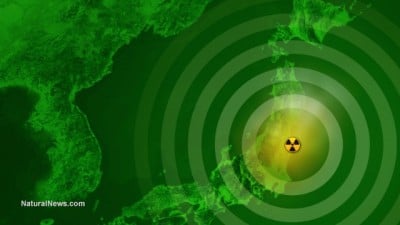Fukushima Radiation Impacts on Environment: “Morphological Defects” Found in Japanese Fir Trees around Fukushima Nuclear Plant

Radiation spewed out by the crippled Fukushima No. 1 nuclear power plant may be responsible for differences in the growth of native Japanese fir trees in the area.
Researchers primarily from the National Institute of Radiological Sciences said Aug. 28 that many fir trees near the plant, as well as other areas, had undergone “morphological defects.”
They intentionally avoided words like abnormality, but used morphological defects and change.
 Their studies showed that the changes occurred more frequently in areas with higher air rates of radiation.
Their studies showed that the changes occurred more frequently in areas with higher air rates of radiation.
“But it is still unclear whether the phenomenon has been caused by radial rays,” a team member concluded, adding that exposure to higher levels of radiation is “one possible cause.”
Conducted in January, the survey covered the town of Okuma in Fukushima Prefecture, located 3.5 kilometers from the plant, where radiation levels of 33.9 microsieverts per hour were detected, and two locations in the town of Namie, also in the prefecture.
While one of the Namie investigation sites is 8.5 km from the plant and measured 19.6 microsieverts per hour, readings of 6.85 microsieverts were detected at the other spot, located 15 km from the facility.
All the sites are within the government-designated difficult-to-return zone, meaning that the residents were evacuated and are prohibited from living there.
The team also examined firs in distant Kita-Ibaraki, Ibaraki Prefecture, which had radiation levels of 0.13 microsieverts per hour, for comparison.
In each of the four sites, the scientists checked 100 to 200 fir trees.
 They found that more than 90 percent of firs in the Okuma site were not growing normally. Fir tree boles normally extend upward with two or so branches arising from them horizontally each year. But this was not the case.
They found that more than 90 percent of firs in the Okuma site were not growing normally. Fir tree boles normally extend upward with two or so branches arising from them horizontally each year. But this was not the case.
Similar changes in shape were found in more than 40 percent of firs and around 30 percent of the trees, respectively, in the two Namie locations. Less than 10 percent of fir trees in the Kita-Ibaraki survey site also were different.
According to the NIRS, findings of studies concerning the 1986 Chernobyl nuclear disaster and other research revealed that conifers, such as firs and pine trees, are vulnerable to the effects of radiation.
However, the scientists noted that the problems reported in their latest survey may have been caused by animals, tree sickness or cold weather, not by exposure to strong radiation.
The Environment Ministry has been examining the impact of radial rays on local ecosystems since the nuclear crisis unfolded at the Fukushima nuclear plant four years ago. The NIRS study is part of those ministry efforts.
The governmental agency has to date monitored 44 kinds of animals and plants in areas around the damaged facility, but no other significant changes or abnormalities have been reported.
‘LABORATORY EXPERIMENTS ESSENTIAL’
Tomoko Nakanishi, a professor of radiation plant physiology at the University of Tokyo, said the latest findings are invaluable as researchers have difficulty doing surveys in the difficult-to-return zone due to high radiation readings.
“There had been so little data on such areas,” she said.
But Nakanishi also pointed out it will require further research to conclude the morphological changes have been caused by exposure to radial rays.
“Other factors may have affected fir trees,” Nakanishi said. “Researchers need to examine through lab experiments what will happen when firs are exposed to high levels of radiation.”

